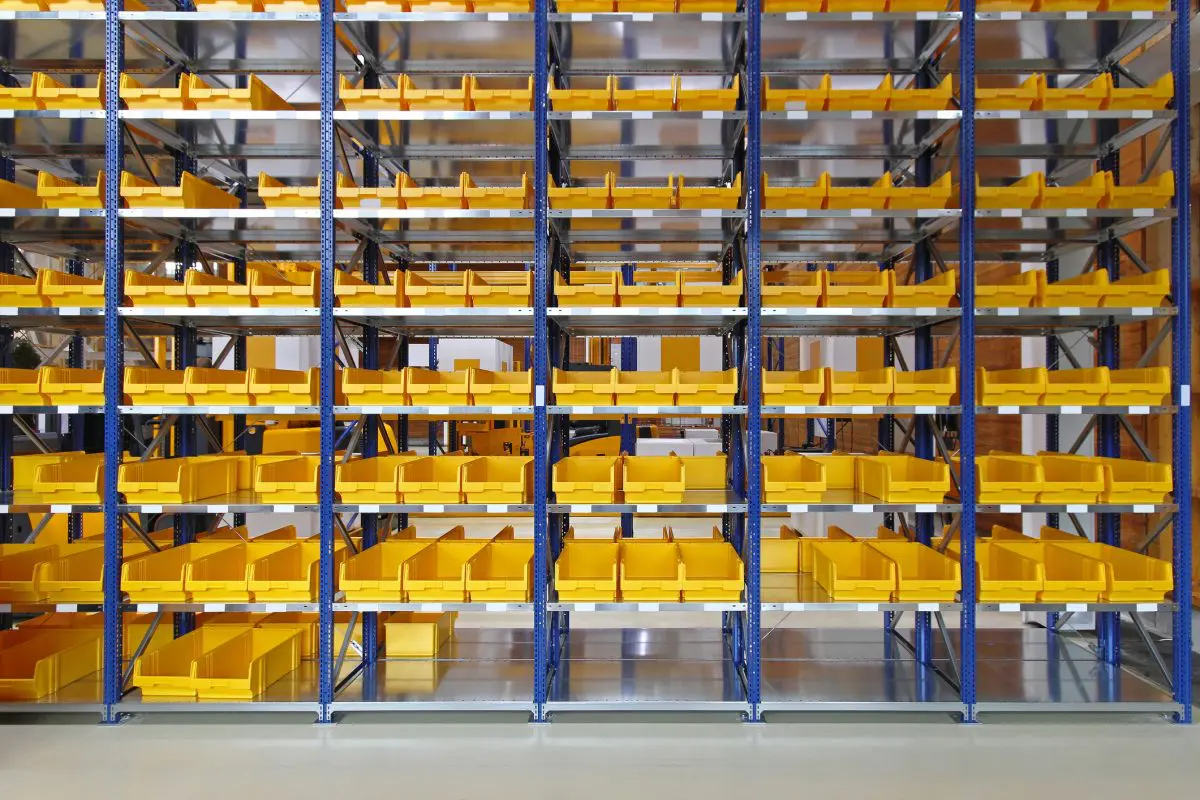What is Out of Stock?
Out of Stock describes the situation when, after receiving an order from a customer, the company does not have that particular product or raw material in stock in the appropriate quantity and on the required terms . As a consequence of such a situation, the purchase does not take place, the company loses revenue and in the long term damages its image towards the customer.
In our article we show the most important concepts related to out of stock: how is the rate calculated, what are the causes and consequences of this phenomenon and what are the main measures to avoid it?
Out of Stock Quota
Every action or movement within warehouse management is based on a delicate balance between the demand for a product and its existence in the warehouse. When this balance is disrupted, an out-of-stock situation arises.
The out-of-stock rate is one of the KPIs that can be measured in logistics management and is calculated as follows:
Out-of-stock rate = missing items / total number of items x 100
Consequences of Out of Stock
The direct consequence of out of stock is an increase in logistics costs. The risk of warehouse failures is quite high these days: the higher the stocks, the higher the warehouse logistics costs and companies generally tend to limit them as much as possible. This fact resulted in concepts such as just-in-time or cross-docking.
While it is understandable that costs increase when an out-of-stock situation occurs, calculating all the resulting losses is complicated. You can only refer to estimates, which always involve subjective factors.
On the one hand, out of stock leads to an immediate loss of the respective sales process, which could not be realized (target value). On the other hand, the customer will look for the desired product from competing companies (subjective value). This in turn results in a loss of image, which also represents a loss of trust, especially in areas such as e-commerce logistics , and has a negative effect on future demand (subjective value).
How do out of stock situations arise?
There are many reasons for stock outs and they can be found at different points in the supply chain. Some examples:
- An unexpected surge in demand: A very common example is that of the “favorite toy” that comes into fashion at Christmas. Since the lead time for production and distribution is longer than the time span specified by the deadlines, out-of-stock situations often arise.
- Poor demand planning: The task of demand forecasting is one of the most demanding areas of logistics. Estimating future demand requires analyzing a variety of data, including sales history or seasonality and cut-off dates.
- Lack of accuracy between the captured inventory data and reality due to human error in locating the products or updating the inventory data.
- Transport delays: If the goods arrive at the warehouse later than planned, this can lead to a delay in the delivery dates for the end customer.
- Supplier Delays: For a producer, the lack of a single type of raw material can slow down an entire production line.
- Human errors at various points in the supply chain.
Efficient strategies to avoid out of stock
Implementation of an adequate demand forecast
In an extremely heterogeneous logistics environment as we find it today, it is necessary to limit uncertainties in demand forecasts and to adjust supply as much as possible. In fact, there are big data applications in this area with great potential for logistics.
In order to make a solid demand forecast and thereby avoid stock outs to some degree, one should:
- take into account that there must be an estimated margin of error in every prediction .
- Identify the phase of the product life cycle that the product is in (introductory phase, growth phase, maturity phase, saturation phase, degeneration phase or decline).
- Forecast order peaks for the corresponding (holiday) days of the year and take into account the seasonality of the industry .
- Only make forecasts for a reasonable period of time, as the distant future is too unpredictable and uncertain. The operation with shortened lead time can be very helpful.
Use a computer system that networks and optimizes the processes in the supply chain
The implementation of business management software has proven to be an effective strategy for controlling and optimizing logistics processes . Due to the high complexity of the processes, integration of different types of systems is usually required. This is where ERP (Enterprise Resource Planning) stands out as the basis that can be linked to more specific systems such as warehouse management software or fleet management programs.
One of the main objectives to be achieved with the use of these systems is to control the available stocks at various points in the supply chain and to send alerts indicating when certain references need to be replenished. These programs also minimize human errors in process management .
Control of KPI in warehouse management and data maintenance
Monitoring key indicators in inventory management is essential to avoid inefficiencies that can lead to stock outs. We would like to highlight the following measures:
- Check reorder point : refers to when a replenishment order is to be placed to the supplier. The reorder point needs to be checked constantly as it sets the minimum stock that the company can hold to avoid stock outs.
- Identify the quantities to be purchased using indicators such as inventory turnover, days’ supply (showing how long average inventory lasts) and bin occupancy .
- Calculate sufficient safety stock to be able to absorb fluctuations in demand or with suppliers, but without causing oversizing of stocks in the warehouse.
Implementation of a continuous inventory management
Occasionally, stock outs occur because products cannot be found in the warehouse even if they are in the company’s inventory. This can be solved by implementing a WMS that works with a permanent inventory system . It is an ideal solution for companies with a complex and high number of references.
The warehouse management software grants access to inventory data in real time and can therefore control what is where in the warehouse. In addition, the digitization of stock data enables an analysis of the history and shows stock fluctuations of the products concerned.
Automation of intralogistic processes and reduction of goods losses
In every inventory there are losses , whether it be through deterioration of the goods, improper storage, mistakes in handling and even theft. Again, control is important to ensure that shrinkage does not result in an out-of-stock condition. These measures can counteract this:
- Restricted access to inventory database.
- Automating the handling of loads improves the safety of all processes enormously and prevents accidents that could damage goods and personnel. In addition, the use of machines also supports compliance with FIFO or LIFO principles.
- Automatic control of the goods and data transfer to the system at special pallet inspection stations, where the goods are compared with the data displayed by the WMS.
In short, despite the statement that “the most profitable inventory is the one I don’t have”, inventory is a necessary regulatory element for the smooth functioning of the supply chain. Avoiding out of stock is becoming a key objective of any business looking to ensure profitability. New technologies such as warehouse management software or automatic systems make implementation easier.







